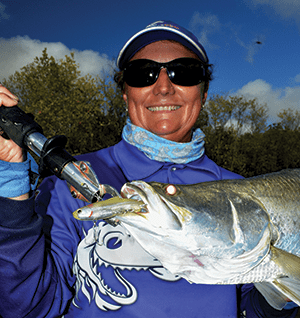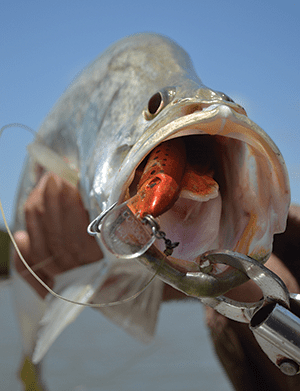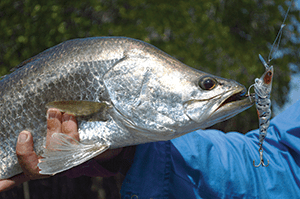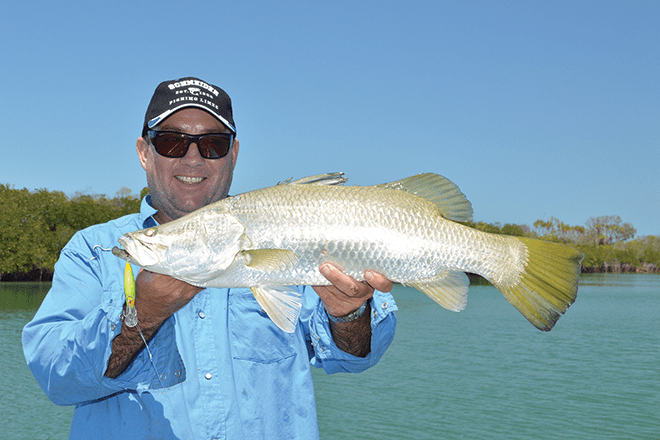THERE would be something awfully wrong if you couldn’t get ambushed by a barramundi or mangrove jack in the creeks and river systems of Arnhem Land. Sight casting lures into clear water and then watching fish attack your lure and explode from the water in front of you is an adrenalin fix alone.
In Arnhem Land you will find endless structures to fish, so where to start? Well in a new location we start by trolling and looking for deep drop-offs that filter onto shallow weed beds, fallen trees, low-hanging branches, sunken timber snags and rock formations. If you can’t see any fish to cast at, work close to the banks and structures because it’s only a matter of locating the fish and finding where they are most likely to strike from.
While in Arnhem Land we often found barramundi lying amongst the sticks and snags and beneath undercut banks. They can be hard to spot, although their big, rounded yellow tails slowly waving in the weeds and snags are a dead giveaway. Before you cast, try to determine whether or not the tail has spots, otherwise you may get hooked up to a Queensland groper instead of a barramundi.
Fish will be facing into the current. This fact can be used to your advantage by casting a floating lure or popper up-current of the fish or snag and letting the movement of the water take the lure into the strike zone for you. The strike zone for barra can change depending on their mood, but mostly they are very lazy.
If a barra is not in the mood to play, the lure needs to be placed very close to or at times even on the fish’s head to get a reaction.
When they are in an aggressive mood however, they will chase down a lure from up to a couple of metres away. Getting the correct drift path can be challenging when dealing with wind and tide. The use of an electric motor can eliminate the frustration and hold your position against wind and tide. We have had our best sight-casting sessions on the last of the run-out and first of the run-in tides.
Early mornings before the wind gets up present a good time for sight fishing due to the calm water surface improving visibility and depth perception. This is also where a pair of polarised Spotters sunglasses with Halide lenses will improve your chances of spotting fish. The dark glass lenses change colour to suit the environment, reacting accordingly to extreme glare and heat.



When wearing these sunnies, distant objects will also become clearer and sharper and you will be able to see barramundi below the surface. For shallow and surface-casting action around snags and weed beds, try Halco Roosta poppers, 1m-diving Halco Laser Pro 120 Multi Treble hard-bodies, Z-Man FrogZ rigged weedless and stickbaits.
Zerek Ripper Divers and 2.5m-diving Halco Laser Pro 120s cast in front of barra and ripped down will work if fish are feeding mid-water. Samaki Vibelicious soft vibes and sinking Yo-Zuri hard-bodies jigged or retrieved with a slow roll can often get the attention of a barra. Lures with slow and fast actions in various colours are good to have in your tackle box when looking for barra.
Barra will respond to a variety of retrieval methods, you just need to work out what stirs them up on the day. They will take anything from surface lures to divers, it just depends how they are feeding.
 Bush ‘n Beach Fishing Magazine Location reports & tips for fishing, boating, camping, kayaking, 4WDing in Queensland and Northern NSW
Bush ‘n Beach Fishing Magazine Location reports & tips for fishing, boating, camping, kayaking, 4WDing in Queensland and Northern NSW









